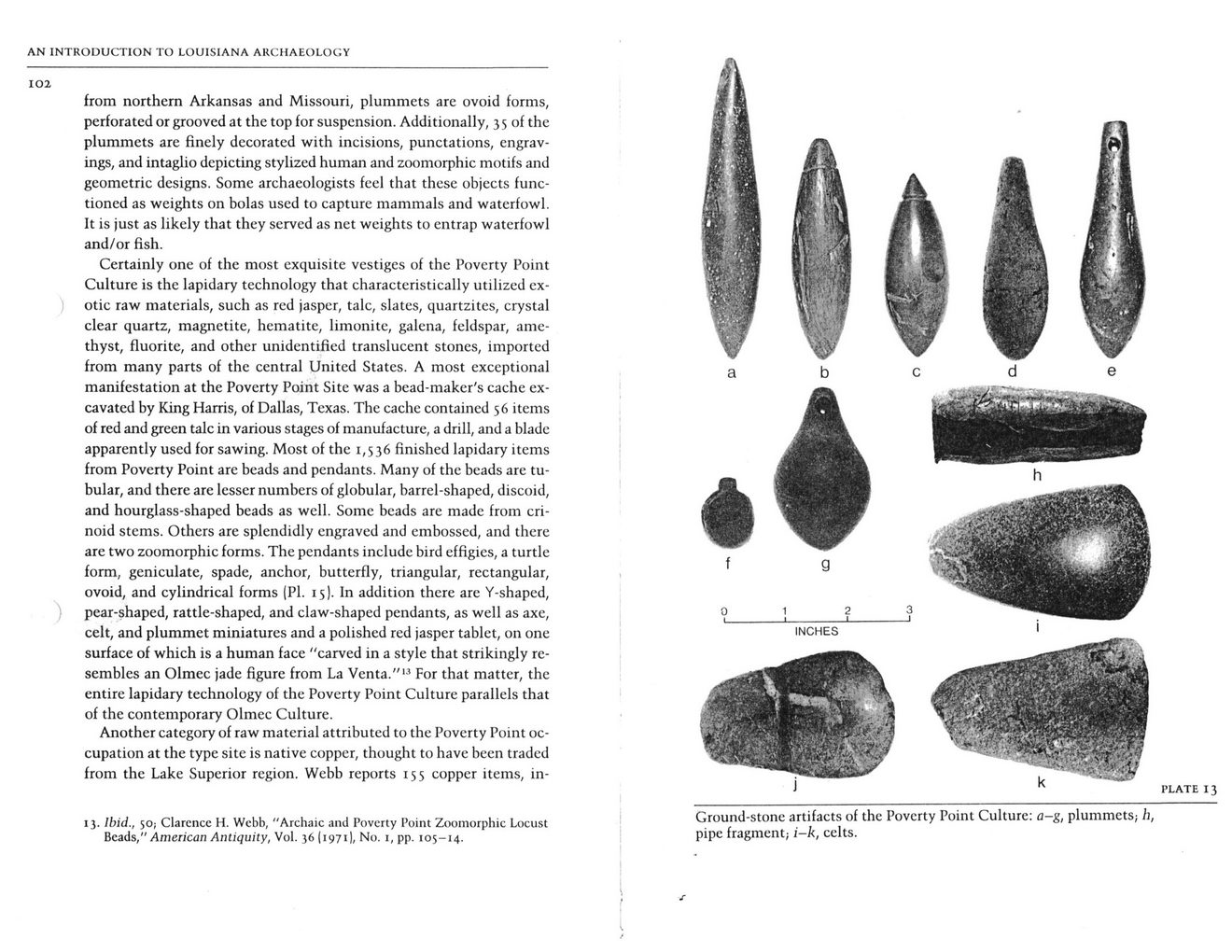This text was obtained via automated optical character recognition.
It has not been edited and may therefore contain several errors.
AN INTRODUCTION TO LOUISIANA ARCHAEOLOGY 102 from northern Arkansas and Missouri, plummets are ovoid forms, perforated or grooved at the top for suspension. Additionally, 3 5 of the plummets are finely decorated with incisions, punctations, engravings, and intaglio depicting stylized human and zoomorphic motifs and geometric designs. Some archaeologists feel that these objects functioned as weights on bolas used to capture mammals and waterfowl. It is just as likely that they served as net weights to entrap waterfowl and/or fish. Certainly one of the most exquisite vestiges of the Poverty Point Culture is the lapidary technology that characteristically utilized ex-) otic raw materials, such as red jasper, talc, slates, quartzites, crystal clear quartz, magnetite, hematite, limonite, galena, feldspar, amethyst, fluorite, and other unidentified translucent stones, imported from many parts of the central United States. A most exceptional manifestation at the Poverty Point Site was a bead-maker's cache excavated by King Harris, of Dallas, Texas. The cache contained 56 items of red and green talc in various stages of manufacture, a drill, and a blade apparently used for sawing. Most of the 1,536 finished lapidary items from Poverty Point are beads and pendants. Many of the beads are tubular, and there are lesser numbers of globular, barrel-shaped, discoid, and hourglass-shaped beads as well. Some beads are made from cri-noid stems. Others are splendidly engraved and embossed, and there are two zoomorphic forms. The pendants include bird effigies, a turtle form, geniculate, spade, anchor, butterfly, triangular, rectangular, ovoid, and cylindrical forms (Pi. 15). In addition there are Y-shaped, ~) pear-shaped, rattle-shaped, and claw-shaped pendants, as well as axe, celt, and plummet miniatures and a polished red jasper tablet, on one surface of which is a human face "carved in a style that strikingly resembles an Olmec jade figure from La Venta."13 For that matter, the entire lapidary technology of the Poverty Point Culture parallels that of the contemporary Olmec Culture. Another category of raw material attributed to the Poverty Point occupation at the type site is native copper, thought to have been traded from the Lake Superior region. Webb reports 155 copper items, in- 13. Ibid., 50; Clarence H. Webb, "Archaic and Poverty Point Zoomorphic Locust Beads," American Antiquity, Vol. 36 (1971), No. 1, pp. 105-14. Ground-stone artifacts of the Poverty Point Culture: a-g, plummets; h, pipe fragment; i-k, celts.

Poverty Point (Indian Culture) Poverty Point Culture - Louisiana Archeology Introduction (07)